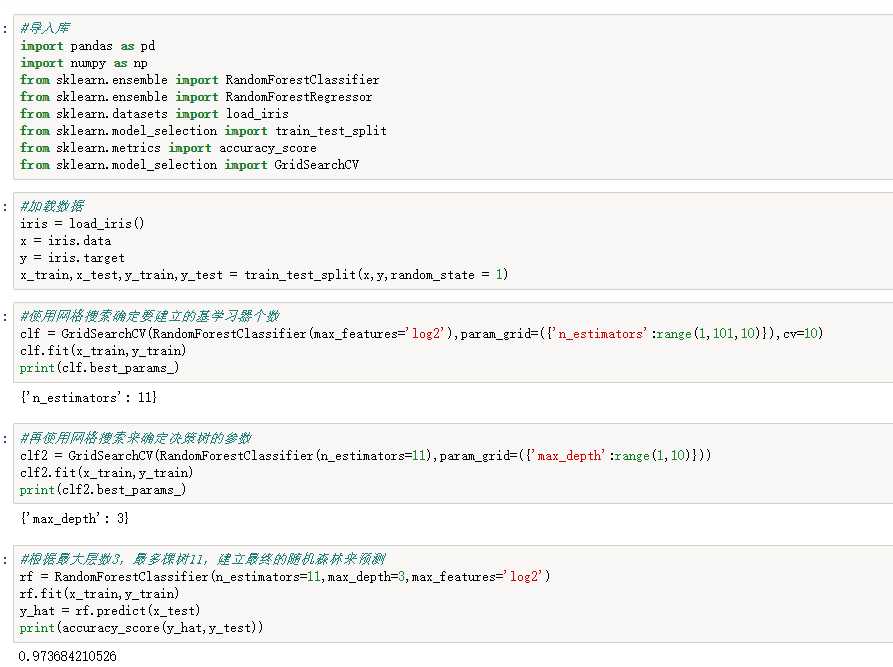集成學習(Random Forest)——實踐
對於集成學習,由於是多個基學習期共同作用結果,因此在做參數調節時候就有基學習器的參數和集成學習的參數兩類
在scikit-learn中,RF的分類類是RandomForestClassifier,回歸類是RandomForestRegressor
官方文檔:http://scikit-learn.org/stable/modules/ensemble.html#ensemble
RandomForestClassifier : http://scikit-learn.org/stable/modules/generated/sklearn.ensemble.RandomForestClassifier.html#sklearn.ensemble.RandomForestClassifier
RandomForestRegressor :http://scikit-learn.org/stable/modules/generated/sklearn.ensemble.RandomForestRegressor.html#sklearn.ensemble.RandomForestRegressor


1、RF框架參數
參數說明:
1、n_estimators:隨機森林的基學習器數量
2、oob_score:是否使用袋外數據來評價模型
2、基學習器參數
基學習器由於可選的很多,sklearn裏面的好像默認是決策樹
參數說明:
1、max_features:這個最重要:在做決策樹時候選擇的特征數量 。默認是"None",意味著劃分時考慮所有的特征數;如果是"log2"意味著劃分時最多考慮
2、criterion:決策樹劃分的衡量,gini是基尼系數,回歸樹種是mse均方誤差
3、max_depth:決策樹的最大深度
4、min_samples_split:最小劃分的樣本數,如果低於這個樣本數,決策樹不做劃分
實例說明:

#導入庫 import pandas as pd import numpy as np from sklearn.ensemble import RandomForestClassifier from sklearn.ensemble importRandomForestRegressor from sklearn.datasets import load_iris from sklearn.model_selection import train_test_split from sklearn.metrics import accuracy_score from sklearn.model_selection import GridSearchCV #加載數據 iris = load_iris() x = iris.data y = iris.target x_train,x_test,y_train,y_test = train_test_split(x,y,random_state = 1) #使用網格搜索確定要建立的基學習器個數 clf = GridSearchCV(RandomForestClassifier(max_features=‘log2‘),param_grid=({‘n_estimators‘:range(1,101,10)}),cv=10) clf.fit(x_train,y_train) print(clf.best_params_) #再使用網格搜索來確定決策樹的參數 clf2 = GridSearchCV(RandomForestClassifier(n_estimators=11),param_grid=({‘max_depth‘:range(1,10)})) clf2.fit(x_train,y_train) print(clf2.best_params_) #根據最大層數3,最多棵樹11,建立最終的隨機森林來預測 rf = RandomForestClassifier(n_estimators=11,max_depth=3,max_features=‘log2‘) rf.fit(x_train,y_train) y_hat = rf.predict(x_test) print(accuracy_score(y_hat,y_test))
集成學習(Random Forest)——實踐
